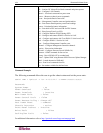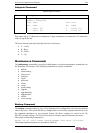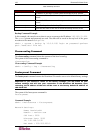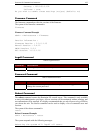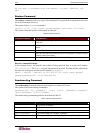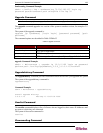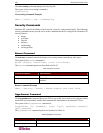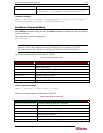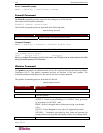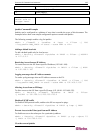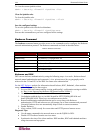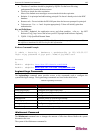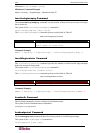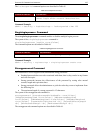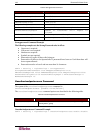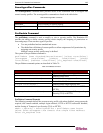
142 DOMINION SX USER GUIDE
Server Command Example
admin > Security > certificate > server
Firewall Command
The firewall command provides control for the turning on or off the firewall.
The syntax of the firewall command is:
firewall [enable <true|false>]
The firewall command options are described in the following table.
Table 59 Firewall Command
COMMAND OPTION DESCRIPTION
enable <true|false>
Enable/Disable firewall with true or false
Command Example
admin > Security > Firewall > firewall enable true
Note: Use the following when working with the Firewall.
Chain FORWARD (policy ACCEPT)
target prot opt source destination
When you enable IP forwarding for Dual LAN units, use IPTables rules to create policies for traffic
being forwarded between LAN interfaces.
IPtables Command
The iptables command is an administration tool for IPv4 packet filtering and Network Address
Translation (NAT). The iptables command provides an interface to the linux iptables. The
command parameters and options are the same as the linux system command.
The iptables command options are described in Table 60.
Table 60 iptables Command
COMMAND OPTION DESCRIPTION
-A input
Append one or more rules to specified chain.
--dport
Destination port
--flush
Clear the iptables
-j target
Jump based on the following target keywords:
ACCEPT – Packet is passed through (i.e. for INPUT chain, processed
by local stack, for OUTPUT, sent)
DROP –Packet is dropped and no further processing is performed
LOG –
QUEUE – Passes datagram to user space (if supported by kernel)
RETURN – Terminates processing by this chain and resumes the
calling chain (or executes the chain policy if there is no calling chain)
-list
View the current iptables.
--log-prefix
DOM_IPACL



